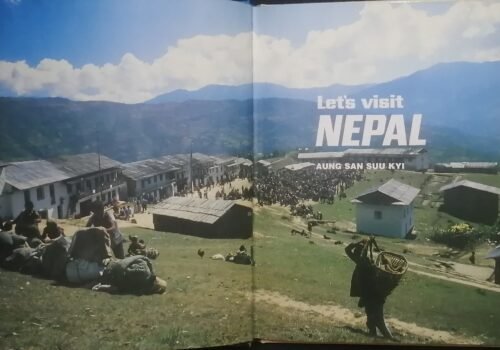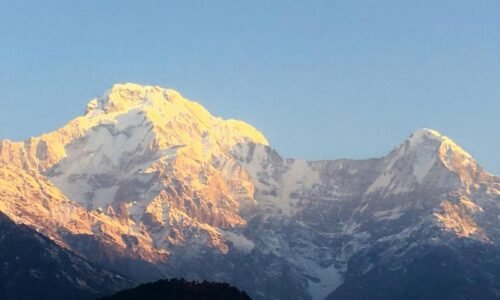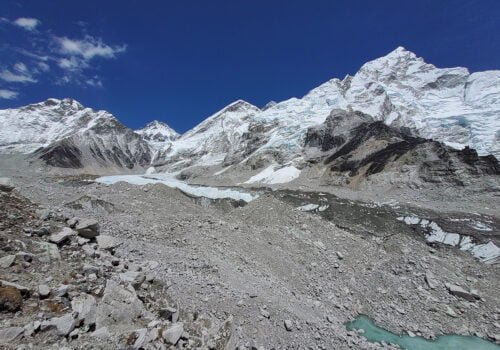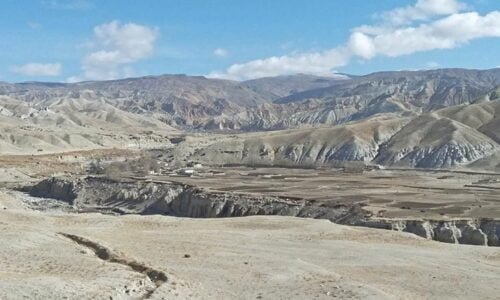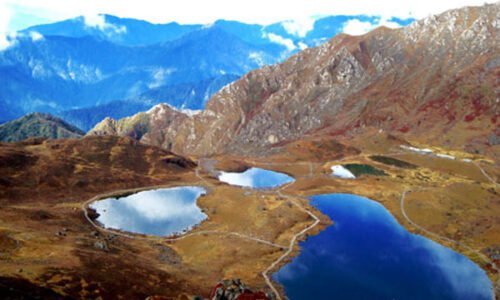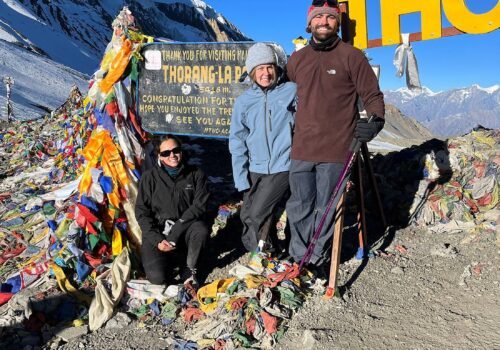Trekking to Everest Base Camp via Salleri
22 Jan 2023 11 min to read
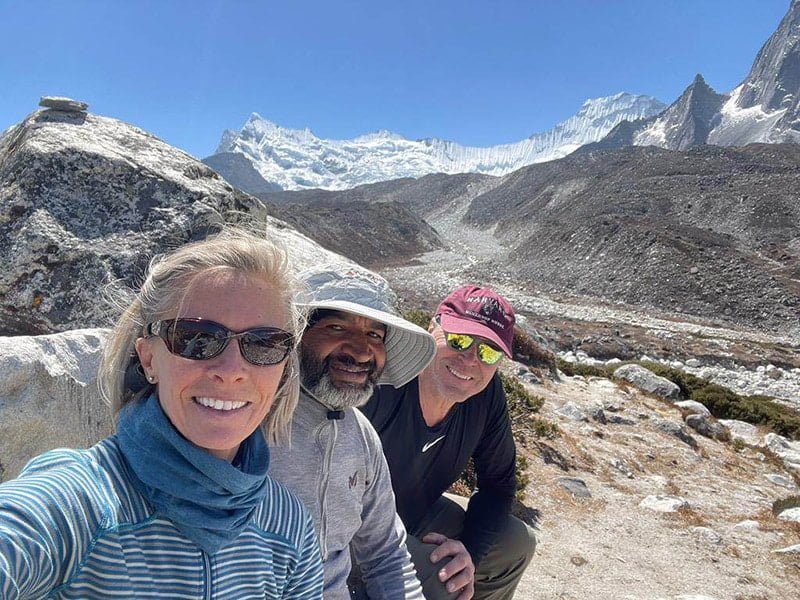
Outdoor Treks provides you with a great opportunity of amazing trekking to Everest Base Camp via Salleri. Salleri is the headquarter of the Solukhumbu district. The new alternative route for the Everest Base Camp trek is slowly gaining popularity. Salleri to EBC route doesn’t include airways. This is all in all roadway trek route. Salleri is at a low elevation compared to Lukla (a popular route for many travelers/trekkers). It takes extra days to reach Everest Base Camp from Salleri. It allows many travelers to acclimatize properly and adjust to the surroundings.
Trekking to Everest Base Camp via Salleri is best for budget travelers as well as for those who have longer holidays. It fits best for those travelers who seek adventure and want to explore the local culture. Also, meet new people, and travel unexplored paths. Salleri is not a new route but a recently opened Everest Base Camp trek route. It can be a good alternative for the Classic Jiri-EBC or Phaplu-EBC route. It is best for travelers wishing to trek EBC via roadways. This route is also best when Lukla or Phaplu’s flight schedule is uncertain.
Salleri to Everest Base Camp trek journey starts from Kathmandu to Salleri on a well-paved road via a private vehicle. From Salleri, take a local jeep ride to Khari Khola. The trek starts from Khari Khola following several villages to EBC and Kalapatthar. And return via the same route. From Salleri, you can also follow other trek routes designed by the travel agency for you. You can also customize the itinerary as per your preference.
Travelers/Trekkers can also explore this beautiful village of Salleri and the surrounding places. A great chance to witness the natural beauty of this village in its original form. It is a less-crowded trail so travelers get to explore this village more freely. Travelers can spare some extra days to trip around this village besides the EBC trek. At Salleri, travelers can carry out the following activities:
- Interact with local Sherpas and understand their culture and lifestyle.
- Hike to Ratnange Danda (3350m) to get stunning views of Everest, Mera Peak, Kanchenjunga, and so on.
- One day hike to Kemje Danda to get the fabulous views of snow-capped mountains.
- Explore the Buddhist monasteries- Thupten Choling, Chyalsa, and Chiwang
- Hire a local guide, visit the local places and learn about it
- Stay at local teahouses and try local dishes.
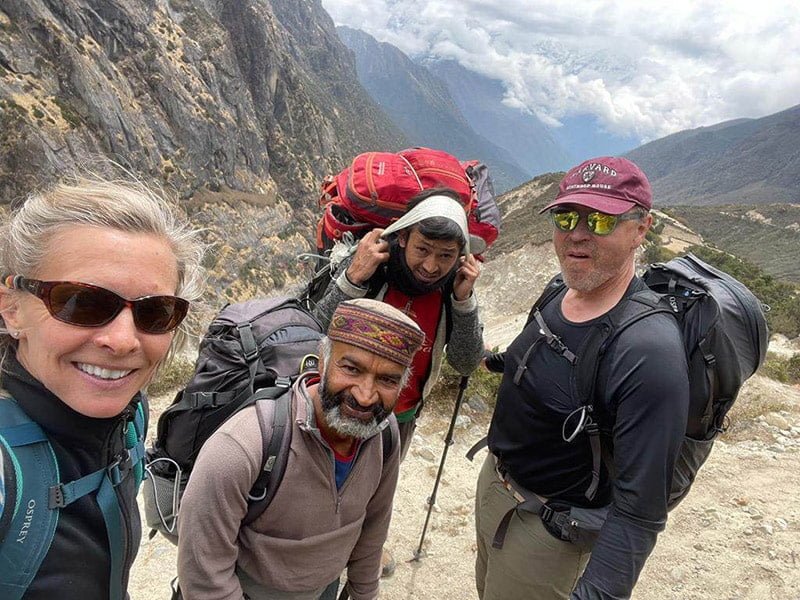
Why choose this trekking to Everest Base Camp via Salleri route?
- The trek route is less crowded.
- The trek route is the least explored.
- The unexplored beauty of the region in its natural form.
- Kathmandu to Salleri road is around 90% well-paved which gives a comfortable traveling experience.
- Enjoy the scenic landscapes, green hills, terraced fields, flowing rivers, beautiful villages, and snowy mountains on the way.
- A complete private vehicle ride from Kathmandu to Salleri.
- The trek starts from a lower altitude which gives trekkers enough time to adjust to the surroundings and prevent altitude sickness.
- New experience trek to EBC via roadways for trekkers.
- Best for budget travelers and the road fare is cheaper compared to airways.
- Best for travelers with longer holidays who want to explore new trek routes and do adventure treks.
- Basic accommodation with good fresh meals and friendly locals.
- Take Photographs or videos of new unexplored destinations.
- Support local people.
- Also, the best option for trekkers is to do a one-way Lukla/Phaplu flight and trek via Salleri (either trek via Salleri and return on a flight or vice-versa).
Outline Itinerary Salleri to EBC Trek
Days: Program Schedule
01& 02: Arrival & Trek Preparation Day and Kathmandu Sightseeing
03 & 04: Drive Kathmandu to Salleri and Khari Khola Next day (4 hours), trek to Paiya (2730m) 4-5 hours
05: Trek to Phakding (2610m) 6-7 hours
06: Trek to Namche Bazaar (3440m) 6-7 hours
07: Acclimatization day in Namche
08: Trek to Tengboche (3860m) 6-7 hours
09 & 10: Trek to Dingboche (4410m) 5-6 hours, next day : Acclimatization
11: Trek to Lobuche (4910m) 5-6 hours
12: Trek to Gorakshep (5164m), trek to Everest Base Camp (5364m) & back to Gorakshep (5-6 hours)
13 to 17: Trek back to Khari Khola
18 & 19: Drive back to Kathmandu
20: Final Departure
How much does the Jeep costs from Kathmandu to Salleri?
If you book a private jeep to Salleri, it costs USD 225. The jeep capacity is 8 Pax. But, if you choose to share a jeep and travel on a shared jeep, it costs USD 30 per person. Then, the jeep capacity is 9-10 Pax and remember the jeep is public. Hence, it may be little uncomfortable to travel or simply you have to adjust.
Also, at present trekkers must pay the TIMS entry fee which costs NPR 2000 per person. It is your choice to hire a private jeep or ride through a public sharing jeep. But, for a smooth and comfortable ride, private jeep is the best choice.
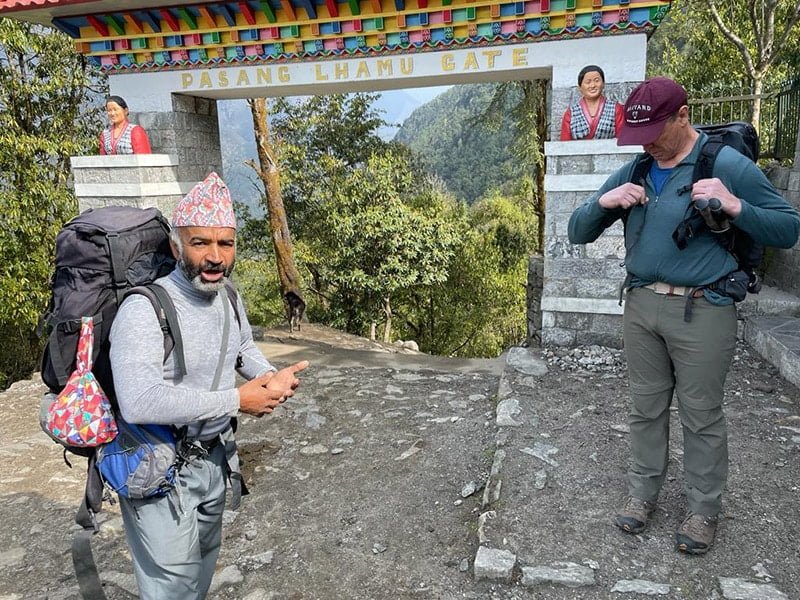


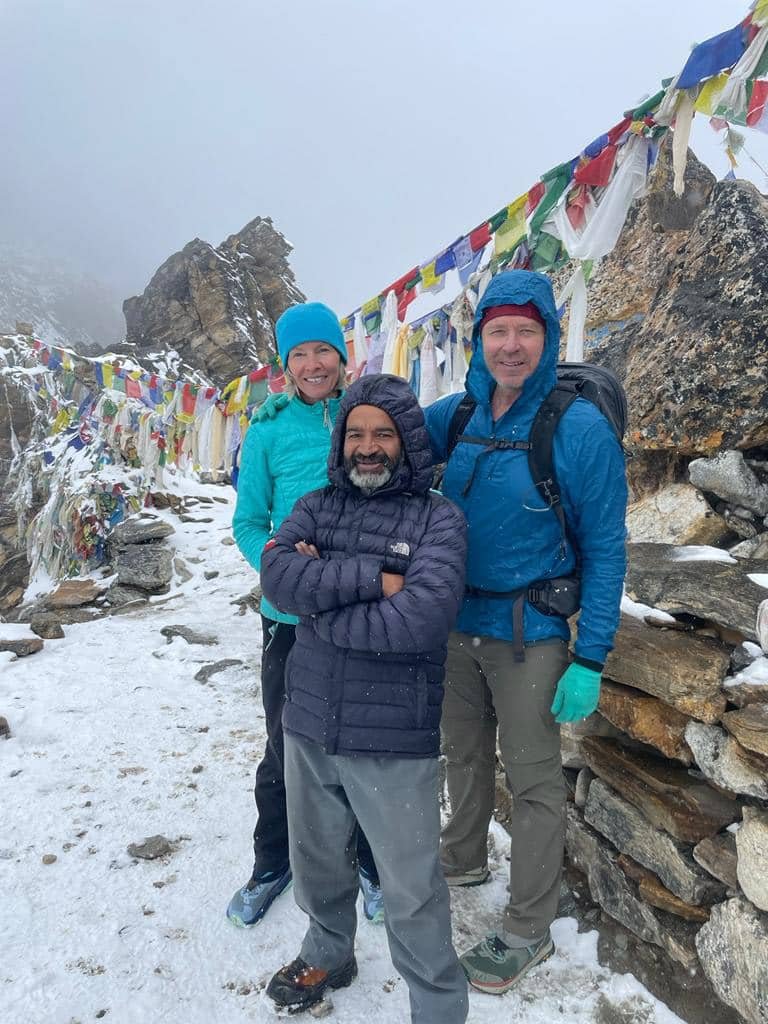
Accommodation
Teahouses or lodges with basic facilities are the means of accommodation during Salleri to EBC trek. These teahouses are comfortable and must pay additional costs for the facilities like Wi-Fi, laundry, hot bucket water, and charging devices. It is a good idea to book ahead during peak season for your convenience. In the higher regions, it is most likely to share rooms. Washrooms are also outside the teahouse or lodge.
Food and water
This Salleri to EBC trek offers the opportunity to try local dishes such as dal bhat, which is a traditional Nepali meal consisting of rice and lentil soup. Sherpa stew which is a type of soup is the highlight of this trek. A special Sherpa dish that helps travelers to keep their bodies warm at high altitudes. Other food options like noodles, soup, bread, eggs, and hot drinks are also there.
You can also try intercontinental cuisine, some delicious bakery items, and coffee at your personal expense at Namche. Drinking water is easily available throughout the region. You can fill water from taps or pay an extra charge to fill the boiled water in the teahouse. Always carry a water filter or purification tablets to ensure that you have a reliable source of safe drinking water.
Communication
Everest Link’s Wi-Fi card is a source of internet providers throughout the Everest region. The networks are stable mostly in the lower regions. Mobile networks are also stable in the lower regions. But, in the higher regions both mobile and internet connectivity networks are unstable. You can also purchase the local Sim card for calling and use a data pack to use the internet.
Transport
The means of transport for Salleri to the EBC trek is a private vehicle. The trek journey starts from Kathmandu to Salleri in a private or shared jeep. Then, ride on a local jeep to Khari Khola. From Khari Khola, the trek begins. We follow the same route to return and drive back to Kathmandu in a private vehicle.
Travel Insurance
If you’re planning a trip to the Everest region of Nepal, it’s a good idea to purchase travel insurance. It protects you against unexpected events or emergencies that may occur during your trip.
It’s important to find a policy that covers high-altitude trekking and mountaineering activities for the Everest region treks. Specifically, look for a policy that does cover all essential activities. Consider the following things while purchasing travel insurance for the Everest region:
- Coverage for medical emergencies
- Coverage for trip cancellations or interruptions due to an unforeseen event
- Coverage for lost or stolen belongings
- Coverage for high-altitude trekking and mountaineering activities
- Coverage for emergency evacuations

Best time to visit
The best time to visit depends on your specific interests and activities. If you’re planning a trek, the best time to visit is usually from Spring (March to May), and Autumn (September to November) seasons. The weather is clear, bright, and generally the most stable. The winter and rainy seasons are riskier to trek due to the slippery trails and unstable weather. It is possible to trek but you must plan properly and prepare accordingly before starting this trek.
How to get there?
Salleri to Everest Base Camp trek can be accessed from Kathmandu. You can take a scenic private vehicle ride to Salleri. Take a private or shared jeep from Kathmandu to Salleri. Then, a local jeep to Khari Khola. From Khari Khola, the trek begins following several villages of the Everest region.
Required Permits & its Cost
The compulsory permits are:
- Khumbu Rural Municipality permit costs:
- Foreigners- NPR 2000/person
- SAARC- NPR 1000/person
2. Sagarmatha National Park (SNP) permit costs:
- Foreigners- NPR 3000/person
- SAARC- NPR 1500/person
3. Trekkers Information Management System (TIMS) costs:
- Foreigners- NPR 2000/person
- SAARC- NPR 1000/person
- Diplomats/Foreign Officials & their families- NPR 500/person
How long does it take to issue the permit?
It only takes a few hours to issue the permit. Trekkers must submit all the required documents to the travel agency.
Where to issue the permit?
For the Salleri to Everest Base Camp trek, we require two permits. Khumbu Rural Municipality Permit and Sagarmatha National Park (SNP) Permit. You can issue an SNP permit either from Tourist Service Centre, Exhibition Road, Kathmandu, or Monjo in the Everest region. For Khumbu Permit, you must issue the permit at Lukla as it is imposed by the local government. Since all permits are taken care of by the travel agency, trekkers needn’t worry much.
Just submit the following documents to the travel agency to issue the permits.
- Passport photocopy with 6 months validity
- 4 Passport size photos
- Nepali Visa with the arrival stamp
- Travel Insurance papers (all essential things must cover)
- Flight tickets photocopy
- Agreement Letter to trekking company and Immigration Head
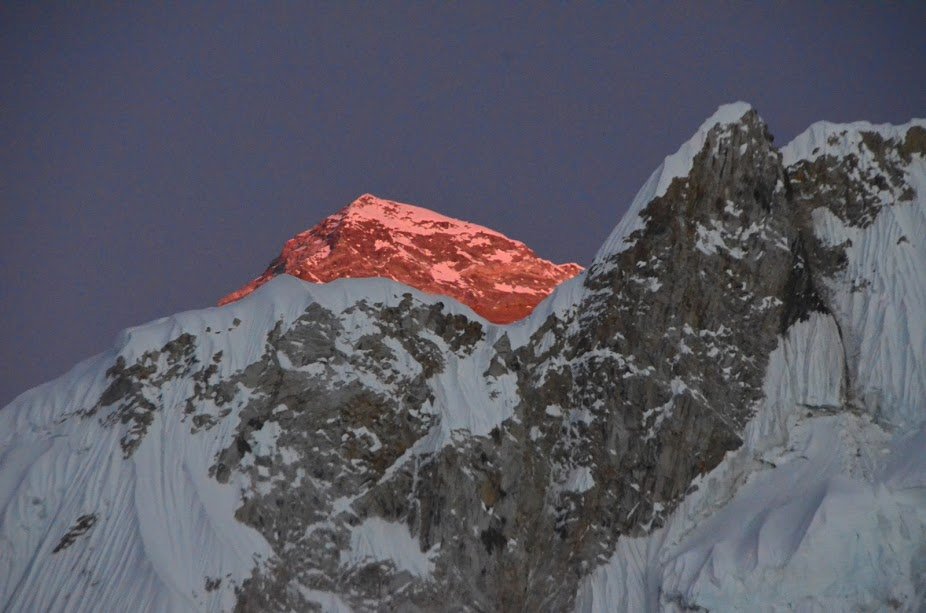
Salleri to EBC Trek Difficulty
Salleri to EBC trek is moderately difficult. The long trek durations, several ascend and descend unpredictable weather, and high elevations make the trek difficult for the trekkers. But, the trek is possible to complete so no need to worry. Trekkers must be physically and mentally fit. So, we recommend you participate in short hikes at high altitudes before starting the trek. Especially, take a necessary health check-ups and eating a healthy diet. Do some physical training exercises and yoga or meditation for sound mental health. Our support is always there throughout your journey from the start to the end.
Porter Luggage limitation
The luggage limitation is a maximum of 15 kg per trekker. One porter carries the luggage of two trekkers. The luggage limitation is planned considering the health of the porters.
Acclimatization Rest
Acclimatization rest is very essential to prevent altitude sickness and adapt to the surrounding environment. The highest elevation of the Salleri to EBC trek is Kalapatthar which is at 5644.5m. During this trek, Namche (3440m) and Dingboche (4410m) are our acclimatization rest spots. So, take proper rest and spend the day exploring nearby places.
Altitude Sickness & its Symptoms
Altitude sickness is also known as acute mountain sickness (AMS). It is a common condition that can occur when you travel to high altitudes, typically above 2,400 meters (8,000 feet). Mainly caused by reduced air pressure and lowered oxygen levels at high altitudes. It can affect the way your body functions. Altitude sickness is natural in the Himalayan regions.
Symptoms of altitude sickness can vary from person to person, but common symptoms include:
- Headache
- Dizziness or lightheadedness
- Fatigue or weakness
- Shortness of breath or difficulty breathing
- Loss of appetite or nausea
- Insomnia or difficulty sleeping
- Swelling of the hands, feet, and face
Preventive Guidelines
There are several preventive guidelines for altitude sickness and are as follows:
- Acclimatize gradually for adjusting to the surroundings
- Stretch the body and do some warm-ups before the trek
- Ascend slowly to give the body time to acclimatize
- Drink plenty of fluids to prevent Dehydration
- Urinate frequently to help the body function properly
- Avoid alcohol and caffeine, and salty foods
- Avoid strenuous activity
- Get plenty of rest to allow the body time to recover and adjust to the lower oxygen levels
- Make sure to get plenty of sleep and take regular breaks to rest
- Use an oxygen cylinder if necessary in case of difficulty
- Immediately consult with a guide and seek medical attention if necessary
Equipment checklist
Essential Documents: Passport, Travel Permits, Visa Photocopy, Passport size photos
Food: Light snacks, Energy bars, and drink mix
Shoes: Camp shoes, Pair of hiking boots, Rubber sandals
Clothes: Windcheater jacket, Thermals, Insulating Down Jacket, Fleece, Long sleeve shirts, Gloves, Towels, Inner garments, Trekking pants, Trousers, Shorts, Socks, Raincoat, Balaclava, Bandana, Gaiters
Accessories: Sunglasses, Hats/Caps, Sunscreen, Lip Balm, Water bottles, Pocket Knife, Solar chargers, Batteries, Head Lamps, Torch, Umbrella, Sewing kit, Water Purifying solution kits, reusable bags to deposit waste, separate clean/dirty clothes
Equipment: Warm Sleeping bags, Map, Trekking poles, Duffel bag
Note: Customize the equipment checklist as necessary. Buy or rent in Kathmandu option is also there.
Updated: March 30, 2023
